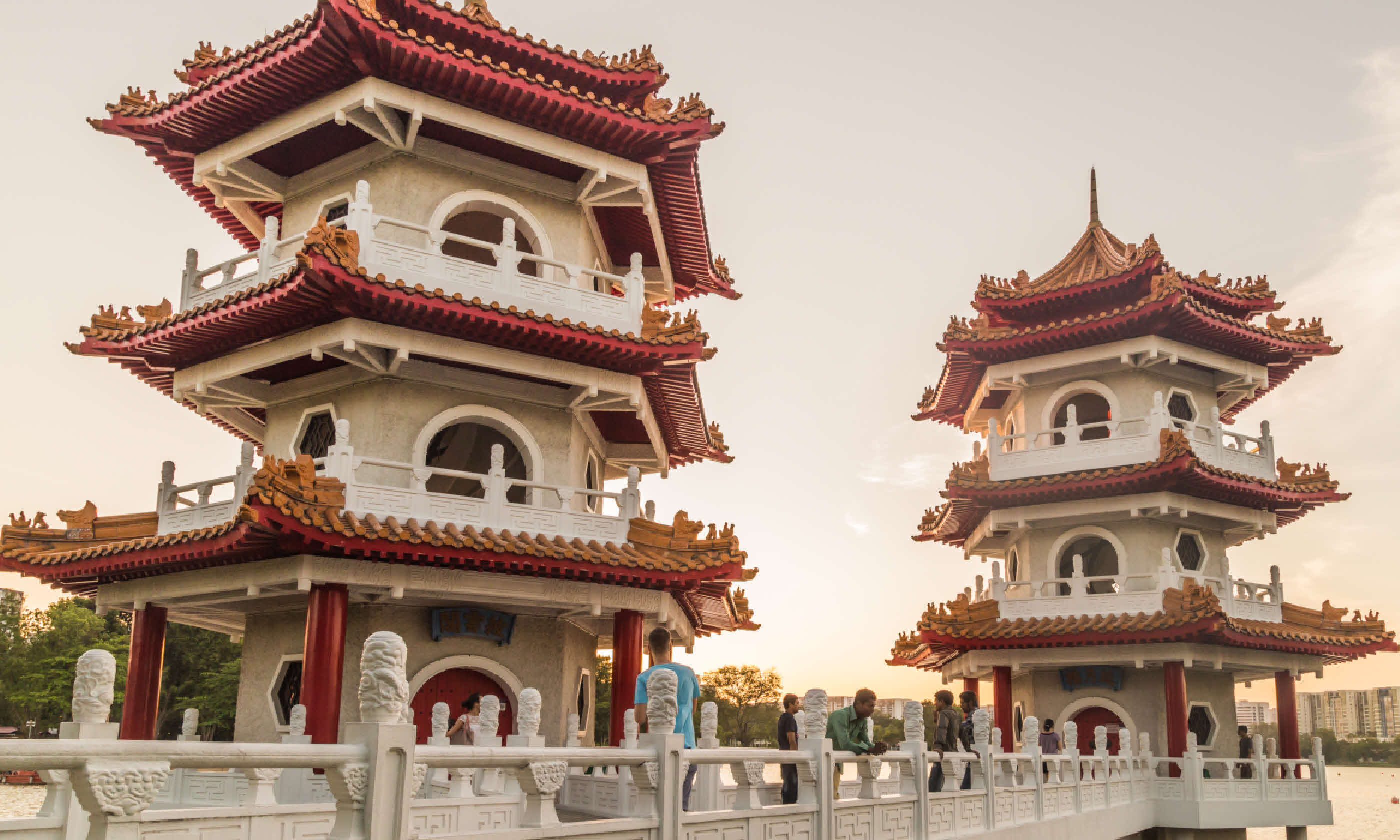
Travelling across Thailand, Malaysia and Singapore by train
You could travel from Bangkok to Singapore by fast train in two days – but where’s the fun in that? Allow two weeks for tropical islands, mysterious highlands and colonial charm
All hail the King! Thailand’s national anthem erupted around Bangkok’s cavernous Hualamphong Station, inducing Thai travellers to rise to face an illuminated portrait of their beloved King Bhumibol. The music receded; a hum of conversation restarted. Saffron-robed monks waited while the marble concourse filled with rice-sacks and suitcases. Food stalls exhaled tempting aromas. The tannoy announced myriad journeys leaving Bangkok throughout the night. The place was alive with noise, smells, activity, and possibility.
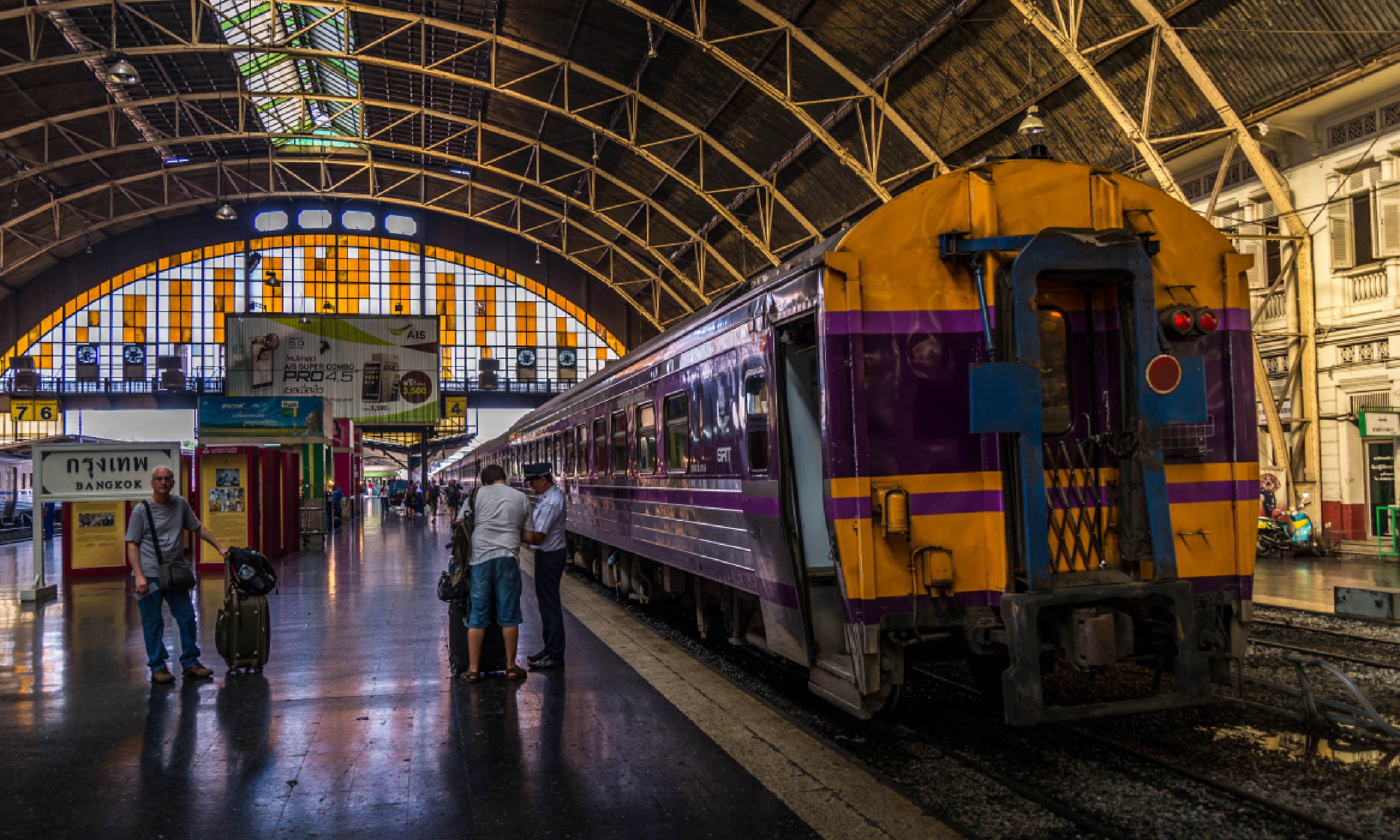 Hualamphong train station
Hualamphong train station
I was here to find my comfortable second-class sleeper-berth, to commence an iconic South-East Asian rail journey from Bangkok to Singapore. The 1,985km route can be completed in two days but I’d allowed myself two weeks to hop-on and hop-off a variety of southbound trains, inching down the southern Thai-Malay peninsula to explore an exotic cocktail of tropical islands and heritage-rich cities en route.
Paradise regained?
Nine hours later, at 4.30am, I disembarked bleary-eyed at Chumphon Station. However, any early morning cobwebs were soon blown away as I left Chumphon Pier by catamaran to head into the sparkling western Gulf of Thailand.
Before long, the bulging green-forested carapace of Koh Tao emerged through silky morning sea mist. Golden strips of beach caught the sunrise. It was still hard to believe that two British backpackers were tragically murdered here in late 2014. Looking out across it now, it was beautiful.
As I arrived, Mae Haad Pier was teeming with ferryboats and long-propeller water-taxis while 2.5km-long Sairee Beach’s wall-to-wall guesthouses, dive-centres and restaurants thronged with young backpackers. Briton Phil Davies, who runs dive outfit Davy Jones Locker, told me he was shocked by the murders – as were locals and visitors. “It was quieter than I ever remember at the end of 2014,” he said, “but now tourists are returning.”
Wannabe divers flock to the island, one of the cheapest places in the world to become PADI-certified; that afternoon, I jumped in with them. In warm seas, among bright brain corals and sea fans, I marvelled at the flurry of angelfish, moon wrasse and parrotfish.
Thereafter I explored the granite hillsides of the interior and found serenity away from Sairee’s over-development at Haad Tien Resort, located on a perfect arc of silvery-white sand at remote Shark Bay.
“My father discovered Shark Bay 25 years ago and bought the land,” Thai owner Jom Salakshana explained. “Back then the only island industry was coconuts and the ferry came every two weeks. Koh Tao has developed fast but has always remained peaceful.”
Hidden heritage
Returning to the mainline, I boarded another night train heading south to Surat Thani, watching moonlight flicker on an unending strip of coconut-palmed coast. From Surat Thani I took a three-hour minivan ride to Thailand’s Andaman Sea coast, to cross to the country’s largest island.
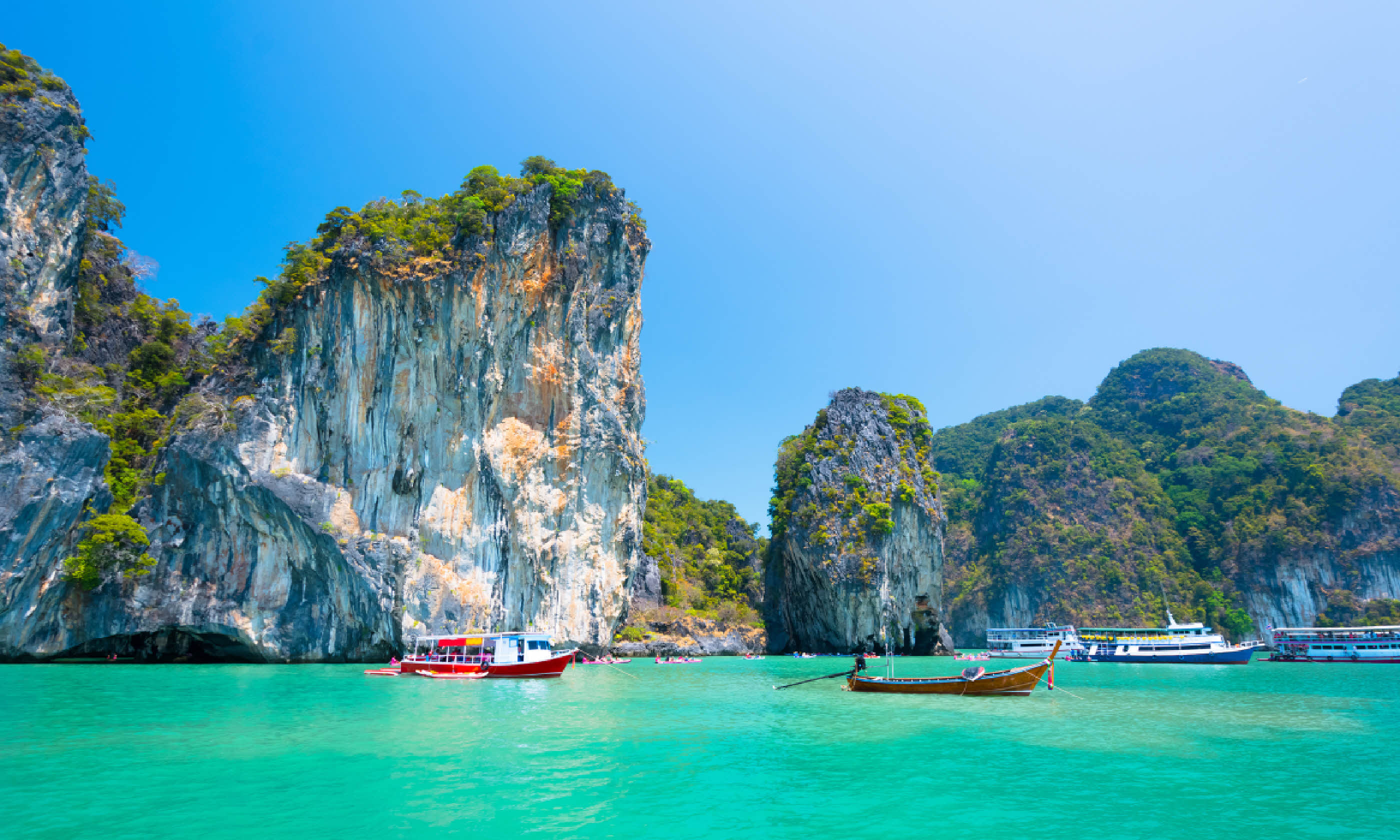 Phuket, Thailand (Shutterstock)
Phuket, Thailand (Shutterstock)
Phuket is best known for mass beach tourism, yet its old town possesses a less heralded and sumptuously opulent Chinese heritage. “Phuket’s old heritage isn’t well-known,” explained guide Wicky Eadgaew. “Tourists prefer relaxing on the beach or snorkelling and elephant-riding trips.”
We walked along Talang Road, which was lined with rows of ornate shophouses. These two-storey buildings fuse European features such as louvered shutters and Corinthian columns with Chinese stucco motifs: turtles for longevity, red bats for good luck. Many have now been gentrified into stylish bars and book-cafés; at night, they’re seductively illuminated with lights of scarlet, mauve, yellow and green.
Chinese migrants arrived in Phuket in great numbers after the 1820s, drawn by a tin-mining boom. Some shophouses still bear the names and trades of the original Chinese settlers such as herbalist Nguan Choon Tong, family-owned since 1917.
Phuket’s halcyon days of tin wealth, from 1900 to 1920, spawned the area’s richest mansions. Chinpracha House on Krabi Road, built in 1903 by Fujian businessman Mr Tan, dazzles with its lavishness: chequerboard Italian marble flooring and mother-of-pearl inlaid furnishings augment an internal courtyard with a koi carp pond. Fifth-generation family descendent, Mrs Tandavaniti, says their family came here from China in the 1850s. Now she plans to convert the property into a boutique hotel. “Maintaining such a house in this climate is expensive,” she told me.
Wild isle
The southbound 1.26am train from Surat Thani shunted into the Thai-Malay border at Padang Besar some hours later. Outside my curtained berth a voice called “ticket”. Or so I thought. Scrambling to find my ticket, I drew open my curtain to face a large smiling lady in a hijab presenting me with a platter of tandoori chicken. Groan. It was 7am. “Tikka?” she beamed. Welcome to Malaysia.
Border formalities complete, the train veered down Malaysia’s west-coast line, passing angular rock pinnacles and rubber plantations. I disembarked at Arau for a 30km ferry ride to Langkawi. I wasn’t expecting to be Robinson Crusoe but the ferry heaved with Malaysians enjoying Friday’s Muslim holiday. Langkawi is the most accessible of an archipelago of limestone islands set in the milky turquoise Malacca Strait.
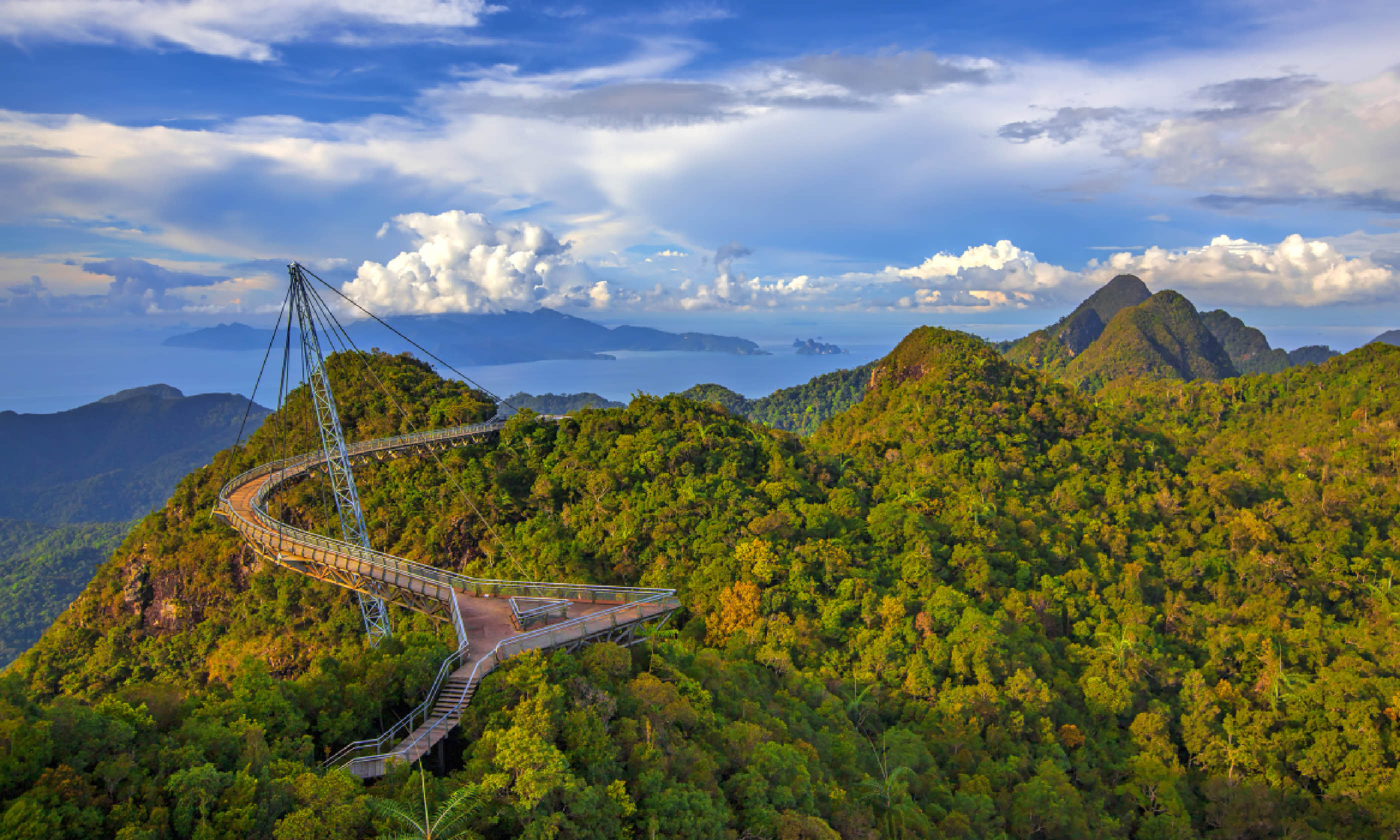 Langkawi seen from Cable Car viewpoint
Langkawi seen from Cable Car viewpoint
I took a boat tour around Langkawi’s UNESCO World Geopark at Kilim. Guide, Arif Mohammed, piloted us around the 550-million-year-old karst scenery swathed by tidal mangroves. There were so many motorboats it felt like the relief of Dunkirk. “We have too many boats,” sighed Arif. “It’s unregulated and they cause too much disturbance.”
Yet biodiversity within the narrow mangrove channels flourishes. We viewed a colony of 400 bats in a cave while the exposed mudflats revealed mudskippers, monitor lizards, a coiled pit-viper bloated by its dinner and fiddler crabs with lopsidedly-large single claws.
In the mangroves we saw dusky leaf langur monkeys, whose striking-white eye-rings make them look as if they’ve fallen for the old joke of looking through Tippexed binoculars, while mischievous long-tailed macaques raided our boat.
We ended our trip watching a dozen chestnut-and-white Brahminy kites skimming the water with talons open to hunt. Then white-bellied eagles joined the fish fest. Inspired by these waterloving birds, I decided to abandon the train, instead continuing south on the evening ferry to Penang. Even the ferry’s video pumping out Boney M didn’t dampen the euphoria of watching sunset cascade across the Langkawi archipelago in our wake.
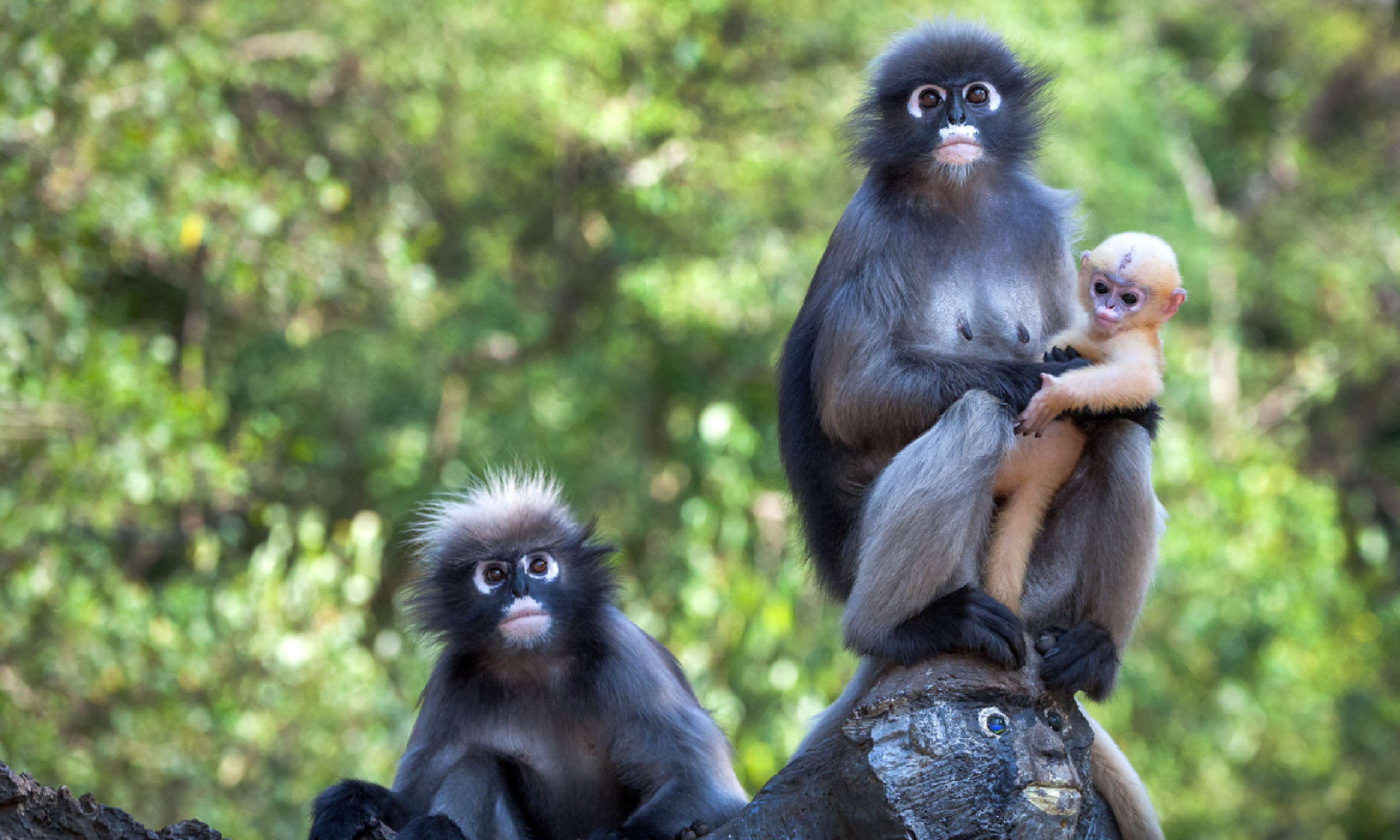 Dusky leaf monkeys (Shutterstock)
Dusky leaf monkeys (Shutterstock)
World on a plate
The best way to discover Penang Island’s UNESCO World Heritage-listed Georgetown is by using your tastebuds. Georgetown is South-East Asia’s most thrillingly cosmopolitan city. Since its late-18th-century inception as a British East India Company trading port, cheek-by-jowl communities of Chinese, Indians and Malays have diversified a colonial underlay of forts and administrative buildings. This cultural cauldron has fused a cuisine offering a bewildering choice of street eats.
Helping me seek out the best biryanis and most scrumptious spring rolls was Food Tour Penang’s Junie Goh. “Different cultures have influenced each other’s cuisine,” Junie explained. “Mainland Chinese food can be bland but, on Penang, Indian and Malay influences have spiced it up.”
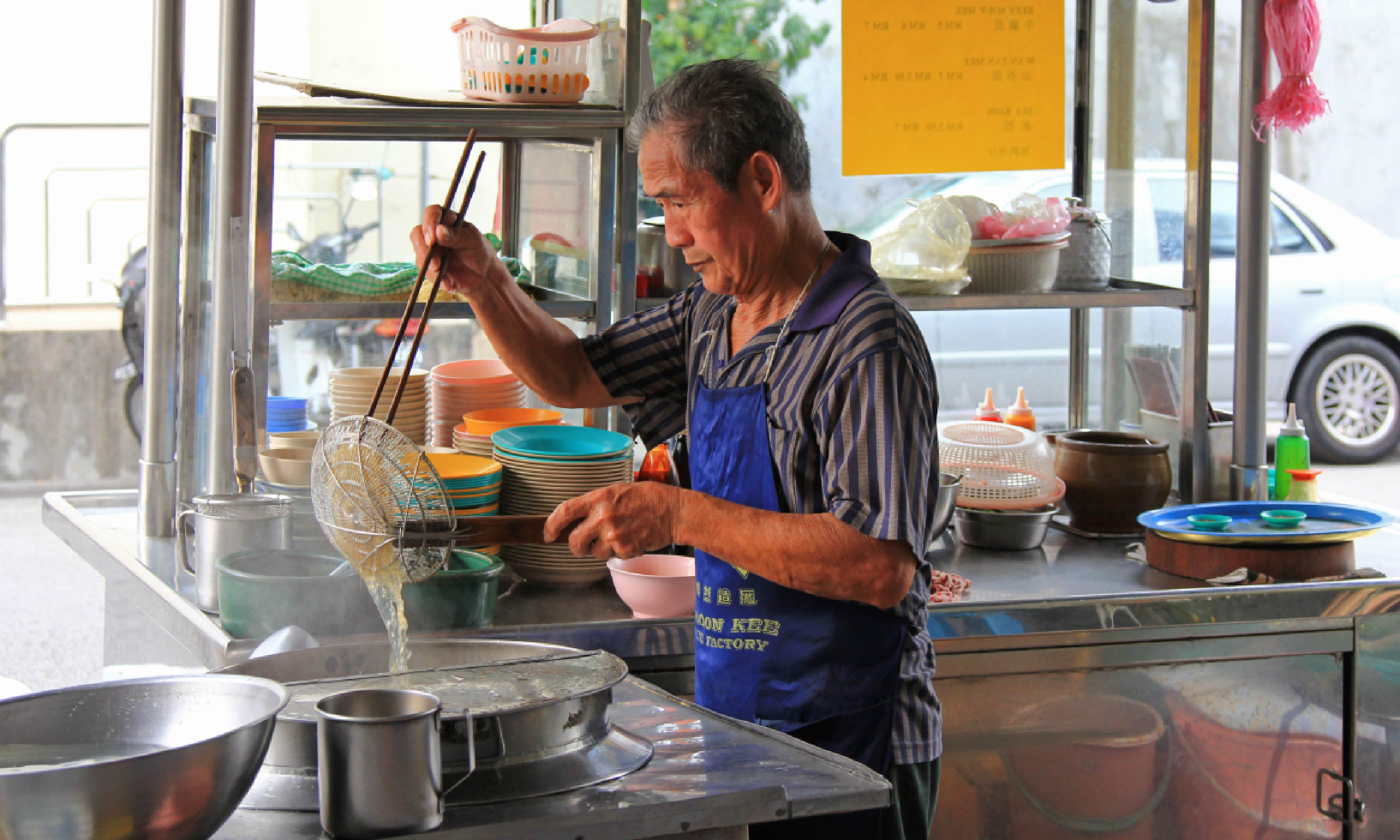 Noodle stall on Lorong Kampung Malabar street in Penang, Malaysia
Noodle stall on Lorong Kampung Malabar street in Penang, Malaysia
We commenced our food tour with succulent prawn and pork fritters eaten with calamansi lime and chilli on the Tan Clan jetty. The Tans have been deep-frying this old country recipe since arriving here from Hokkien, China, in 1900. Next up we hit New Lane’s buzzy open-air food stalls for Penang’s signature char kway teow – flat rice-noodles with prawns in soy sauce. Dessert was cendol, refreshing shaved ice smothered in sweet, green-dyed rice-noodles made by the same family since 1936.
Junie then announced that it was time for an Indian. I pleaded for mercy but my willpower soon crumbled. In Little India we ate dosai pancakes so delicately thin the locals call them tissue. I was soon stuffed like the final murtabak (savoury vegetable-filled roti) that Junie tempted me to try. “We live to eat rather than eat to live,” Junie concluded with a smile.
Malay mystery
I was soon back on the tracks, returning to mainland Malaysia by causeway to Butterworth Railway Station, from where I begin the three-hour train journey through agricultural countryside, minarets poking above distant towns. After pausing to admire the fortress-like Ipoh Station I hopped aboard a bus that took me into the mixed forests and tea plantations of the surrounding Cameron Highlands.
In Bangkok I’d admired the stylish, antiquities-filled home of American Jim Thompson, a flamboyant entrepreneur credited with reviving Thailand’s silk industry. On Easter Sunday 1967, 61-year-old Thompson went for a jungle walk from a holiday cottage in the Cameron Highlands. He was never seen again. Speculation has since raged about his disappearance but one thing is certain, Thompson enjoyed the cool highland climate, popular with expat colonials. The mock-Tudor frontages and manicured gardens of that era remain today, including the 1938 Cameron Highlands Resort near Tanah Rata where Thompson once sipped afternoon tea.
‘Moon River’ was playing as I checked in, ushered by a steward in a crisp white blazer. Afternoon tea followed, featuring a three-tiered Edwardian cake stand of crust-free sandwiches, choux pastries and Devonshire cream. A log fire crackled away. The hotel oozed delightful old-world charm.
Guests are offered hikes with resident naturalist, Mr Madi, including a Jim Thompson Mystery Trail to Moonlight Bungalow, where the American disappeared. Between identifying ferns, rhododendrons, orchids and lilies, Madi pooh-poohed the theories that Thompson could’ve gotten lost or eaten by a tiger. “How could a manhunt of 300 men not find any trace of him?” he shrugged.
We stopped below the hilltop Moonlight Bungalow. “My friend’s auntie told me she was cutting bananas here and saw Thompson get into a car driven by soldiers,” said Madi.
“But who?” I asked, sensing a conspiracy theory.
“Wait,” he teased. “Mr Ahchai from Mayflower Restaurant then saw Thompson get into a helicopter and fly out.”
Madi finally dropped his bombshell: “I think he was a drugs overlord using his silk empire to launder money for the CIA to covertly fund the Vietnam War. He had to flee because the communists were after him.” Phew. The revelation added extra piquancy to my afternoon scones.
Colonial Kuala Lumpur
I boarded a suburban commuter train from Ipoh to rattle 205km southwards to possibly the grandest railway terminus ever built. Kuala Lumpur’s imperious Old Station, completed in 1910, is decorated with Moors-style arches and capped by Mughal domes.
Sprawling, high-octane KL seemed a daunting place to explore with limited time. Yet much of the capital’s magnificent colonial heritage is within a mile of the station and easily accessible on foot. Indeed, my history homage started immediately, at the Hotel Majestic, just opposite the station.
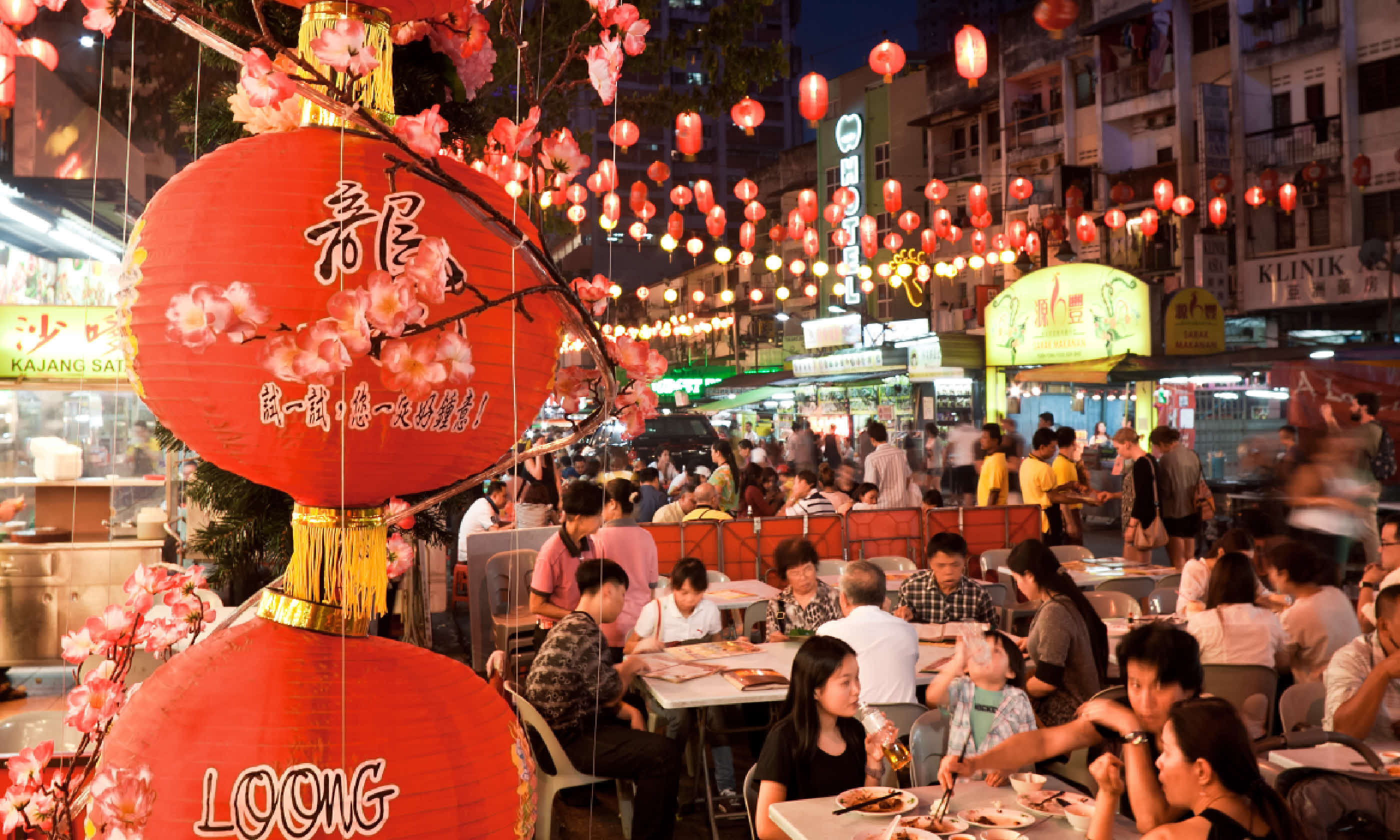 Street restaurant in Kuala Lumpur
Street restaurant in Kuala Lumpur
Recently refurbished, the hotel is a 1932 gem fusing neoclassical square pillars with an art deco facade. In its lounge, Uncle Ooi tickled the ivories of a grand piano; a waitress told me that he’s been doing so since the hotel opened. He’s 76. Elsewhere, charming reminders of yesteryear remain: a gritty cigar lounge with green-clothed card tables; an old screening room reeling out celluloid classics; a gentleman’s barber, Truefitt & Hill, where I got a cut-throat razor shave.
What really astonished was the largesse of KL’s colonial architecture. I started my walk in energetic Chinatown, where the neighbourhood’s Taoist temples and shophouses were dwarfed by British-built behemoths such as the 1910 Magistrates Court, with its striped Andalucian arches, and the late-Victorian Sultan Abdul Samad building, with its 43m clocktower and domes resembling the mosques of Cairo.
Over the road a cricket pitch was being watered by an old man; he told me that hardly anybody plays cricket these days. But etiquette at the mock-Tudor Royal Selangor Sports Club fronting the wicket hasn’t floundered: I was politely refused entry because of my unsuitable attire.
I looped back round to the railway station through a serene botanical garden laid out in 1888. The epiphyte-encased rainforest trees planted a century ago offered some welcome respite from KL’s steamy cacophony.
Hitting the buffers
An overnight train from KL Sentral to Singapore’s Woodlands Station involved eight hours of fitful sleep in a reclining seat. We exited Malaysia after Johor Bahru; then, all that lay ahead was the futuristic skyline crowding the Singapore Strait. End of the line.
Time for a different mode of transport. And I hoped the Let’s Go! Bike Singapore morning sidewalk cycling tour might reveal a different side to a city I’d always considered overly homogenised. “Sure we get fines for littering or spitting gum but Singaporeans believe in rules and that’s why we have a clean safe country,” insisted Rene, my cycle guide, when I questioned Singapore’s love of laws and prohibitions. But he promised we’d see the “nooks and crannies” and experience a diversity visitors often miss.
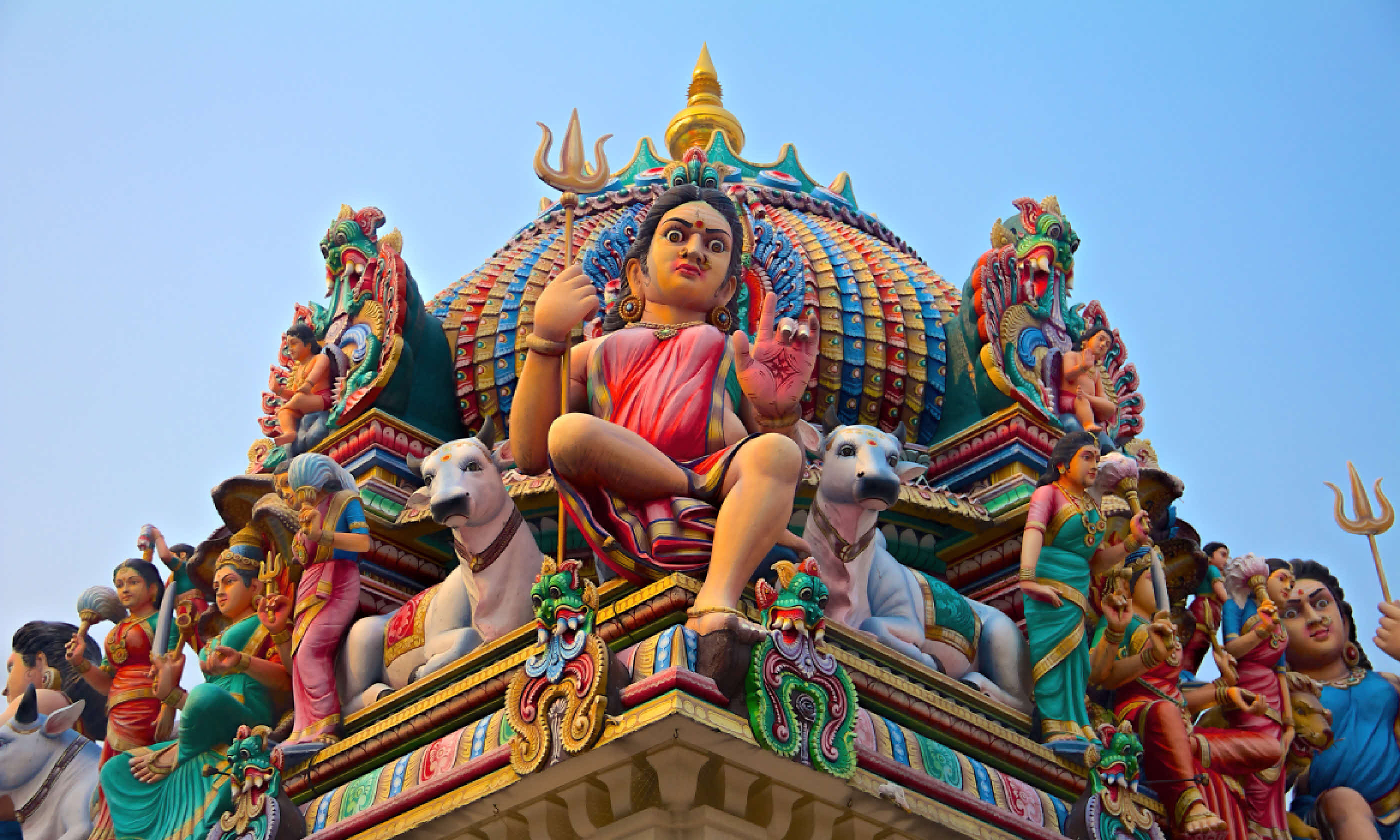 Sri Mariamman hindu temple in Singapore
Sri Mariamman hindu temple in Singapore
We freewheeled through Chinatown and by a 1930s British-built art deco housing estate at Tiong Bahru; we zipped along the Singapore River, passing riverside cafés; we explored the mosques and perfumeries of Kampong Glam’s Muslim quarter. Later I made my own way to charismatic Little India, the sounds and smells of which could have been transplanted from the subcontinent.
My rail odyssey ended in celebratory fashion with a night at Singapore’s most enduring icon, Raffles. There’s so much history inside the late-19th-century hotel that I spent the afternoon exploring its oriental-rugged corridors. I paused at Suite 77 where Somerset Maugham came to write. I saw the once-stilted billiard room, under which Singapore’s last tiger was shot back in 1902. I also chatted with Raffles’ resident historian, 75-year-old Leslie Danker, who filled me in on the hotel’s illustrious clientele: “I’ve met John Wayne, Donnie Osmond, spoken with the Queen and been photographed with Michael Jackson.”
In the late afternoon, I slumped in a wicker chair on my balcony looking inwards at a frangipani-filled courtyard with a Raffles trademark Singapore Sling cocktail in hand. It seemed a fitting end: my rail journey down the Thai-Malay peninsula was something worth toasting.
Make it happen...
Getting there
Malaysia Airlines flies twice daily from London Heathrow to Kuala Lumpur; flight time is 12.5 hours. KL-Bangkok flights take 2 hours. Singapore-KL flights take 55mins.
Getting around
Trains can be booked as you travel, although it’s wise to book popular sleeper services heading south from Bangkok several days in advance. Comfortable second-class sleepers are a better way to meet local people than first-class, where you’re closeted away with other foreigners.
Taller travellers should pay for the more expensive bottom berths for greater legroom. For timetables, see
railway.co.th and
ktmb.com.my.
Seat61.com is helpful for planning. Most South-East Asian stations have showers, so carry a small towel. Border crossings require luggage to be carried through immigration – be packed and ready when pulling into stations to avoid being at the back of sometimes long passport queues.
Thai trains in particular offer breakfast and boxed set meals; train hawkers are abundant. For Thai ferries, see
lomprayah.com; for Malaysian buses, see
busonlineticket.com.
Accommodation
Haad Tien (Koh Tao) has apartments and villas on a divine beach.
The Memory at On On (Phuket) is an exquisite small heritage hotel with dorm beds and period-furnished B&B doubles.
Old Penang Guesthouse (Penang) is a budget option, with small rooms in a heritage building.
Cameron Highlands Resort (Tanah Rata) is a luxurious period hotel, oozing colonial ambience.
The Majestic (KL) is a charmingly updated 1930s hotel, with luxurious rooms and a stylish restaurant offering Hainan dishes.
Raffles (Singapore) is one of the world’s best hotels, with rooms arranged around tropical courtyards.
Activities
Davy Jones’ Locker (Koh Tao) runs four-day Open Water PADI diving courses, including accommodation.
Asia specialists
Ethos Travel can arrange Phuket heritage tours.
A four-hour mangrove boat safari on Langkawi with
Fauna Flora Eco is reasonably priced and includes lunch.
Also consider an evening food tour with
Food Tour Penang.
Let’s Go! Bike Singapore offers half-day Historical Singapore cycle trips.
How I did it: the author's journey:
Day 1: Arrive Bangkok; 1930 train, Bangkok-Chumphon (arrived 0423)
Day 2: 0715 ferry, Chumphon-Koh Tao
Day 3: 2200 ferry, Koh Tao-Chumphon
Day 4: 0423 train, Chumphon-Surat Thani (arr 0716); minivan to Phuket
Day 5: Early evening minivan, Phuket-Surat Thani
Day 6: 0126 train, Surat Thani-Arau (arrived 1134); ferry, Kuala Perlis-Langkawi
Day 7: 1700 ferry, Langkawi-Penang (arrived 1945)
Day 8: Penang
Day 9: Bus, Penang-Butterworth; 0800 train, Butterworth-Ipoh; bus to Cameron Highlands
Day 10: Cameron Highlands
Day 11: Hotel shuttle to Ipoh; 1107 train, Ipoh-KL (arrived 1420)
Day 12: 2300 train, KL-Singapore (arrived 0700)
Day 13: Singapore
Day 14: Singapore; depart late evening for airport







